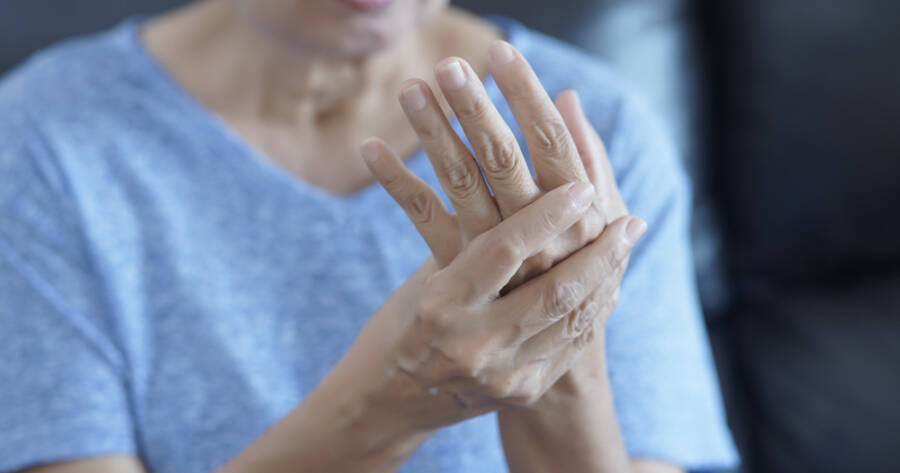Hand osteoarthritis (OA) is a condition that affects millions of people worldwide, and early recognition of its signs could potentially lead to better management and improved quality of life. While it can be challenging to notice the onset of OA, being informed about the early indicators can help individuals seek timely intervention. This article explores the early signs of hand osteoarthritis and offers insights into how early action might lead to more positive outcomes.
Understanding Hand Osteoarthritis
Hand osteoarthritis is a degenerative joint disease that occurs when the cartilage that cushions the ends of bones wears down over time. It predominantly affects adults, and its prevalence increases with age. The condition can impact multiple joints within the hand, including those at the base of the thumb, the end joints of the fingers, and the middle joints of the fingers.
This type of arthritis can result in pain, stiffness, and decreased functionality, making everyday tasks more challenging. Understanding the nature of osteoarthritis and being vigilant about its early symptoms can be essential steps towards managing the condition effectively.
Early Signs to Watch For
Recognizing the early signs of hand osteoarthritis is crucial because early intervention may slow the progression of the disease. Although symptoms can vary, several key indicators suggest the onset of osteoarthritis in the hands:
- Joint pain and discomfort: Individuals might experience mild discomfort or aching in the hands, particularly after activities that involve gripping or pinching. This pain could increase with overuse and improve with rest.
- Morning stiffness: Stiffness in the hands during the mornings or after periods of inactivity can be an early sign. While it may be temporary, frequent stiffness that lasts for more than 30 minutes might warrant further evaluation.
- Swelling and tenderness: Swelling around the joints and tenderness upon touch are potential indicators of osteoarthritis. Inflammation within the affected joints can lead to noticeable changes in size and sensation.
- Reduced range of motion: Individuals might notice limited movement in their fingers or difficulty in performing activities requiring manual dexterity, such as buttoning clothes or using utensils.
- Visible changes: Bony enlargements or deformities around the joints could become apparent. Known as Heberden’s nodes (at the ends of the fingers) or Bouchard’s nodes (in the middle), these are common physical changes associated with hand osteoarthritis.
By paying attention to these symptoms, individuals can seek medical advice early, potentially leading to better management of the condition.
When to Consult a Healthcare Professional
If you notice the early signs of hand osteoarthritis, consulting a healthcare professional could be a vital step. An accurate diagnosis often involves physical exams and imaging tests like X-rays or MRIs to assess joint damage.
By providing insights into the condition’s severity and progression, healthcare professionals can recommend suitable treatment options or lifestyle adjustments. They may suggest monitoring the situation through regular check-ups and assessments to evaluate changes and effectiveness of adopted interventions.
Early consultation might also mitigate anxiety by clarifying the nature of symptoms and exploring beneficial management strategies suited to individual needs.
Managing Hand Osteoarthritis
Although there is currently no cure for osteoarthritis, various approaches might help manage symptoms and improve function:
- Lifestyle modifications: Simplifying daily tasks and using tools designed to reduce joint strain could alleviate stress on the hands. Ergonomic keyboards, specialized jar openers, and other assistive devices may offer relief.
- Physical therapy: Engaging in exercises targeting strength and flexibility possibly improves mobility. A physical therapist can design a specific exercise regimen to enhance function and decrease pain.
- Medication and supplements: Over-the-counter pain relievers and anti-inflammatory drugs might be recommended for symptom management. Some evidence suggests supplements like glucosamine and chondroitin may be beneficial, although results can vary.
- Hot and cold therapy: Alternating hot and cold compresses could provide temporary relief from pain and swelling. Heat often soothes stiff muscles, while cold can reduce inflammation.
- Weight management and diet: Maintaining a healthy weight and a balanced diet rich in omega-3 fatty acids and antioxidants could be supportive in managing inflammation and pain.
- Exploration of further treatments: For more severe cases or persistent symptoms, additional treatments such as corticosteroid injections or surgery might be considered, based on professional recommendation.
Consultation with a healthcare provider is crucial in tailoring a comprehensive management plan aimed at alleviating symptoms and preserving hand function.
Taking Proactive Steps for Better Outcomes
While hand osteoarthritis can pose a challenge to daily activities, recognizing its early signs and seeking timely intervention may lead to more effective management and improved quality of life. Understanding the symptoms and consulting healthcare professionals for personalized care strategies can empower individuals to take proactive measures toward mitigating the impact of the condition.
With lifestyle adjustments, therapeutic exercises, and appropriate medical guidance, those dealing with hand osteoarthritis might continue to enjoy everyday activities and maintain hand functionality. By staying informed and engaged with available treatment options, individuals could improve their outcomes and lead fulfilling lives despite the presence of osteoarthritis.
